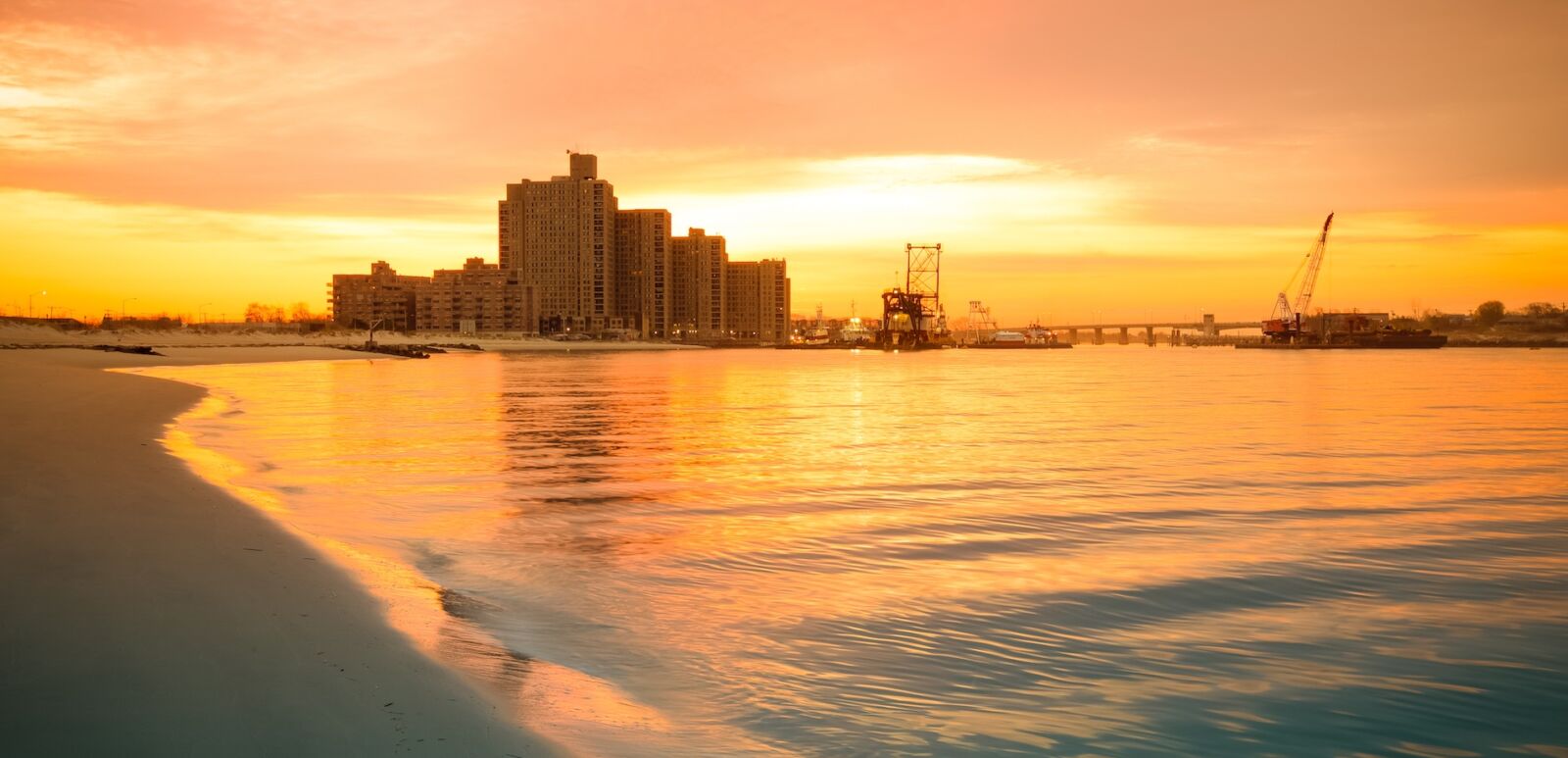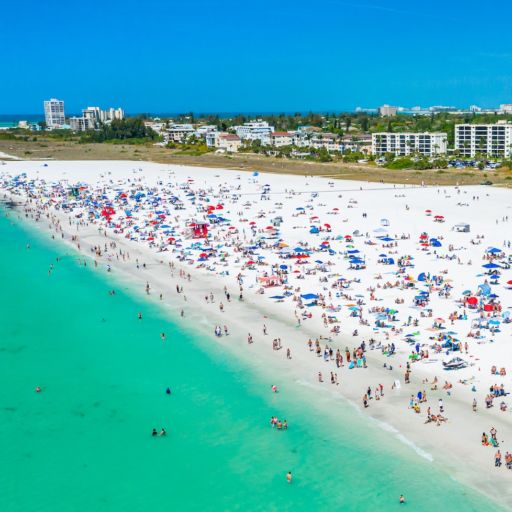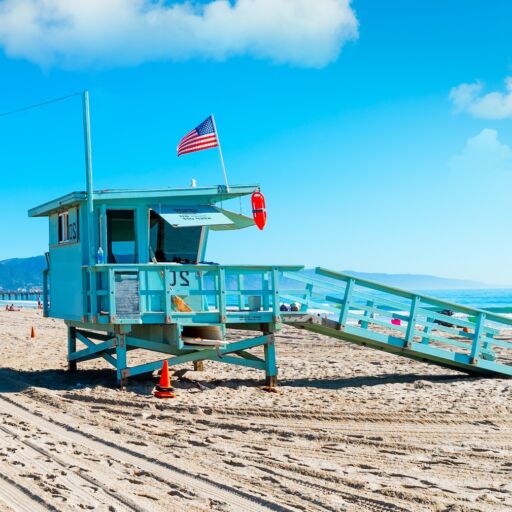There are two kinds of beaches in this world: the summer beach, and the winter beach. The summer beach is sunscreen and shrieking children and sand lodged in places it shouldn’t be. The winter beach is something else entirely: walks and waves and shades of gray on the water. The summer beach advertises pause; the winter beach delivers. Allow me to explain.
The Summer Beach
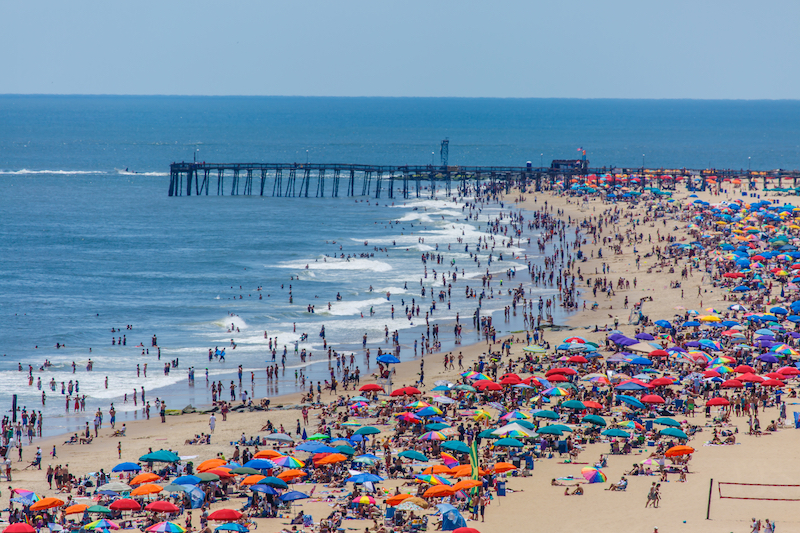
In the summer, I fantasize about white sands, crashing waves and glorious escape. This past summer, from somewhere near the geographic center of the interminable sprawl that is Brooklyn and Queens, where I live, that fantasy carries me to the Rockaways: hot-weather haven of subway-bound New Yorkers. I promise myself relief, water to splash in that did not come from a fire hydrant. Toes in the sand, ankles in the surf, soon I will feel free!
Then I arrive, and realize my naïveté. I had envisioned a romantic encounter; instead, I find a sixth borough, beginning to gentrify. The sand is a neat grid of towel-umbrella-cooler squares that any realtor would be proud to hawk. Waders pack the shallows with the same practiced skill they will later use to breathe into each other’s necks on the train ride home without technically touching. New Yorkers, it should surprise no one, have created a beach in their own image.
This is the summer beach: I tan, I wade, I eat my snacks and read my book and reapply my sunscreen. But I do not, in any sense, feel that I have escaped the logic of the city. Further afield, I try again: I visit the Jersey Shore and am once more disappointed. Here, the beach is a collage of cheetah print. I spot a cheetah print bikini framing a cheetah print shoulder tattoo.
The Winter Beach
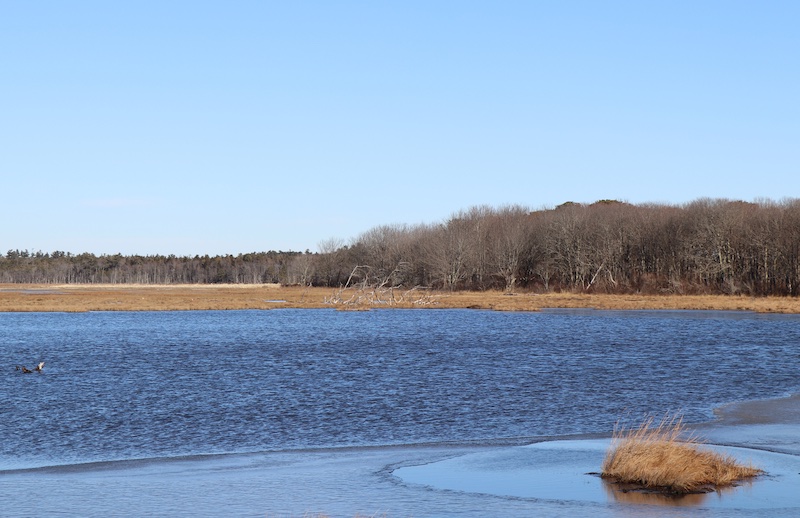
In the fall a friend invites me to go birding. I am skeptical: the last time I tried to identify a bird call, I wound up identifying a rodent hiding in my wall. But my ears perk up at the words “tidal salt marsh.” We take the bus south, then walk past strip malls to Marine Park. We follow a sandy path down from the sidewalk through trees and bushes and knee-high grasses towards the water. Here, finally, I exhale.
Something smells different: not sunscreen and car exhaust, but fresh and sweet and nutty. One of these chest-high plants at the edge of the sea has been tugging on the breeze. It’s not much of a beach, mind you: the water and marsh together take up a space only slightly wider than a city block. This finger of ocean must have been just deep enough to avoid being paved.
On the shore, two men clean nets. In the distance, the water flows out into a bay. Beyond that is a bridge, the beltway that rings Brooklyn; farther still are the Rockaways.
This is the other kind of beach: the winter beach, the kind that can be a portal in a way summer beaches cannot. My friend and I pad through packed wet sand. He takes out binoculars and The Sibley Field Guide To Birds. Seagulls don’t exist, he tells me, and points at the gulls swooping overhead. Laughing gulls, he thinks. He flips through the book to confirm.
Meanwhile, my eyes wander down. Sand crabs dig holes around our feet. Oysters cling to the roots of grasses, telling me that it must be low tide. I begin to notice where patches of lighter green fade into dark; where one grass or sedge encroaches on another. I look for what likes to grow by the water and what things, like the purple poke-berries, prefer higher ground.
I’m trying to make out the grammar, to see what gossip and goings on I can glean. This is a beach that will have plenty to say long after the Rockaways are stripped bare of their summer towels. In the winter, when the grasses go brown, this beach will still offer stories: about what lies beyond the city, beyond the rent and the noise and the sense that our own goings on are the only ones that matter. It invites pause; it marks a spiritual edge as much as a geographical one.
Find Yours
Beaches like this exist across America, next to crumbling industrial parks and behind overlooked stripmalls, fronting oceans and lakes and creeks. They may be tangent to our gossip and goings on, but they are having different conversations. Find yours. Eavesdrop. City and state parks are good places to start; so is Googling your town plus “marsh trail,” “wetlands,” or “nature preserve.”
North of Milwaukee, Wisconsin, boardwalks in Kohler-Andrae State Park on the shore of Lake Michigan are a great place for kids to explore wetlands and sand dunes — in the winter, they can do so on snowshoes. Near San Jose, California, trails offer access to industrial salt ponds that are being turned back into tidal marshes to help buffer low-lying cities against sea level rise; Yourwetlands.org also offers audio tours for other wetlands nearby. In Atlanta, the Dolls Head Trail offers access to Constitution Lake — along with strange trailside art made from discarded toys and trash found nearby (artists clear the trash as well).
The best winter beach is the one nearest your own backyard. Find your beach this winter, then let it be a refuge year round.


